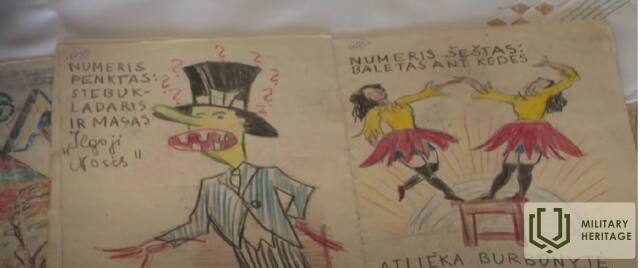"Taiga" in Exile – Journalism Against the Regime
Vytenis Rimkus, an artist who was sentenced to death for publishing the newspaper "Taiga" in Siberian exile, but fate allowed him to survive and return to Lithuania. This is a story about the strength of spirit, the power of creativity, and the indelible national identity even in the harshest exile.
"Exile. The first summer of exile. Our whole family was exiled. My classmate Juozas Balčiūnas also ended up there. We were high school graduates at the time – we were 19 years old. My friend was even a year older. High school graduates – without rights, without property somewhere in the forest... Somehow we met, talked to each other, how everyone was doing. And we thought, maybe we can do something here too?.. To make it more fun and interesting for people – we decided that we should write some anecdotes, fairy tales. There were many exiled families and children in that settlement. There were all kinds of people there. In total, we published 5 issues of the newspaper."
Vytenis Rimkus was born and studied in Šiauliai. In 1949, he was exiled to the Irkutsk region (Siberia) with his entire family at the age of 19. During his exile, he actively engaged in independent cultural activities – together with his classmate Juozas Balčiūnas, he published an underground handwritten newspaper “Taiga”. Five single issues were published, which published anecdotes, fairy tales, illustrations and poems. Rimkus created most of the texts and drawings himself. The newspaper was distributed among exiles – mainly young people and families.
This activity was considered anti-Soviet propaganda. In 1951, Soviet security structures conducted a search, during which original newspapers and other creative works were seized. Based on this evidence, Rimkus was arrested, interrogated and sentenced to death by the East Siberian Railway Court. The sentence was later commuted to 25 years of imprisonment. Rimkus spent five years in the camp, part of which - after Stalin's death - on the basis of an amnesty. In 1958, Vytenis Rimkus returned to Lithuania.
Related objects
Siauliai Railway Station
The railway station is located in Šiauliai.
On September 4, 1871, a third-class station was opened on the Liepaja-Romnai railway line. Šiauliai became an important railway junction. During both world wars, the main building of the station - the passenger hall - was damaged and reconstructed several times: in 1923, a major overhaul was carried out, and in 1930-1931, the hall was expanded and reconstructed. In 1935, Šiauliai railway station was given the category of a first-class station. After World War II, the station was reconstructed again. During the Soviet era, on September 4, 1971, a railway museum was opened there. The station became a witness to the repressions carried out by the USSR against the Lithuanian population: during the deportations of June 14-18, 1941, 351 families and individuals were deported from Šiauliai, and the deportations continued in 1945-1953.
Today, the station is still in operation, and a memorial plaque to the deportees was unveiled on the wall of its building in 1996 (updated after 2010).






